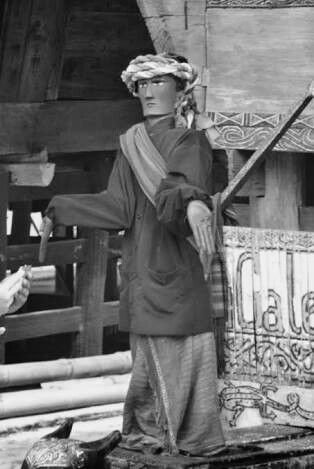
The Sigale-gale doll, that's what it's called. A doll that always looks neat and distinctive with a traditional Batak fashion wrapping complete with Ulos cloth and has a size almost as big as humans, is a reasonable sight found in front of the traditional home of the island of Samosir, North Sumatra, Indonesia. Although there are not many Samosir residents who keep Sigale-gale, but there are still about 4 houses that still keep Sigale-gale in good condition and can still be made dancing.
The Sigale-gale doll has several versions of the story that lie behind the history of Sigale-gale's appearance. The first and most reliable version is the story of the son of a local king who died during the war but did not gain sincerity from his parents. Finally made a wooden doll that is the embodiment of the king's son at once given the same name, namely Manggale. The doll accompanied the king until the end of his life, and at the time of his death, the doll danced beside the king's body.
Another version of the story is, it is said there is a husband and wife who are not blessed with offspring. The husband who is a spiritual teacher named Datu Partoar then goes to the forest and finds a doll like a girl and Datu transforms it into a human child named Nai Manggale. Nai Manggale was treated by the parents who found her and danced beside their bodies when they died, but Nai was sad that she could not have children like them. In the end Nai made a statue doll like herself again to be adopted as a child as well and gradually decreased to the Samosirs when they wanted a child but could not get it / lost.
That's all what i can tell you about "Sigale-gale" story. Thanks for your attention.

Indonesia culture ya bro @mesikelsembiring
Iyaa bro...